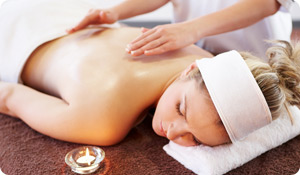
Complementary and alternative healing practices are becoming mainstream as people search for ways to support health naturally. While acupuncture, massage, and chiropractic garner most of the attention, Reiki quietly benefits patients in its own gentle way.
What is Reiki?
Broken into syllables, Rei means "universal" and Ki means "life force." Reiki is the universal life force that flows through all things at all times. According to the National Center for Complementary and Alternative Medicine (part of the National Institutes of Health), reiki is based on the idea that there is a universal (or source) energy that supports the body's innate healing abilities. Practitioners seek to access this energy, allowing it to flow to the body and facilitate healing.
A Buddhist monk developed Reiki in Japan in the 1920s as a healing practice. Today, it's used to reduce stress, promote healing, and relieve symptoms caused by a variety of diseases, conditions and traditional medical treatments. NICCAM says approximately 1.2 million adults and over 600,000 children use energy healing treatments, including Reiki, annually.
How is Reiki performed?
Originally, Reiki was intended as a form of self-care. People would place their hands on areas that needed healing and focus on moving and balancing their life force energy. This practice has developed over the years into a service provided by trained Reiki practitioners in sessions that last between 30 to 90 minutes. Clients usually receive four or more sessions.
The client lies down or sits in a comfortable position in a quiet room, fully clothed, with his eyes closed. The Reiki practitioner places her hands lightly on or about an inch above the client's body. Her palms face down and her hands are slightly cupped. She leaves her hands in each of 12 to 15 different hand positions/locations for a few minutes or until she feels the flow of energy slow or move to a new location. Reiki energy is described as feeling like heat or tingling in the hands. Clients experience no pain and describe Reiki as deeply relaxing.
What does Reiki treat?
Reiki is not intended as a replacement for other types of health and medical care.
Since Reiki has no side effects, it can be used in combination with other healing and medical practices. While there are very few studies that determine its effectiveness, patients who have experienced Reiki say it helps relieve stress, anxiety, depression, and pain, associated with cancer, HIV/AIDS, and dementia. Many hospitals offer Reiki in conjunction with surgical services as a way to assist recovery.
Who are Reiki practitioners?
Anyone can be trained to become a Reiki practitioner, but it can't be self-taught. Instead, the ability to heal with Reiki is "received" from an experienced teacher or Reiki Master. According to NICCAM, training in traditional Reiki has three degrees (levels), each focusing on a different aspect of practice. Each degree includes one or more initiation (also called attunements or empowerments). Receiving an initiation is believed to activate the ability to access Reiki energy.
While many people who become Reiki practitioners are health professionals, licensing and certification is not required to practice Reiki. Ask your doctor or a respected expert in Chinese medicine, acupuncture, massage, or chiropractic for a recommendation.
Sources:
National Institute of Complementary and Alternative Medicine
National Institutes of Health
Reiki, An Introduction
http://www.nccam.nih.gov/health/reiki/introduction.htm
The International Center for Reiki Training
http://www.reiki.org/faq/whatisreiki.htm





